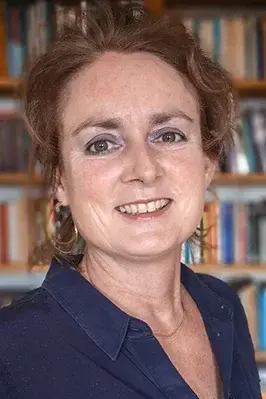Ms Scherschel, according to the UNHCR, up to date more than 3.5 million people have fled the war in Ukraine. The Federal Ministry of the Interior has documented roughly 220,000 entries of Ukrainian refugees to Germany. This number is rising daily. How is this situation different from the one in 2015?
One crucial difference is the legal context. The escape routes for refugees from Ukraine via neighbouring countries are largely open. At the European level, the so-called Temporary Protection Directive has been activated. It was introduced in the aftermath of the Yugoslav Wars, but is now being used for the first time in its history. When invoked, displaced persons can cut out time-consuming red tape and get residence permits for “temporary protection” without having to undergo an inspection of their individual claim to asylum. Under the directive, refugees are entitled to a direct access to the labor market, educational and social services and suitable accommodation.
Even within the group of currently displaced persons from Ukraine, differences are made. In principle, the Temporary Protection Directive also applies to people from third countries who are equally fleeing the war from Ukraine.
True. Austria, for example, applies stricter rules to people who are not from Ukraine, but happened to be there when the war broke out. They are granted entry on humanitarian grounds, but they have to apply for asylum. On this point, the EU directive contains only an optional provision, which can be amended by national law. Germany does not make this distinction.
How would you describe the current public opinion with regard to the refugees compared to 2015?
The refugees are perceived as Europeans who had to leave their country due to the Russian war of aggression. As a result, the refugee situation is far less controversial than in 2015/16. There is a common consensus that we are dealing with a humanitarian emergency of catastrophic proportions. This war is taking place in Europe and is being seen as a threat to the European idea. In contrast, the migration taking place in 2015/16 was only seen as a threat to Europe and its borders by parts of the political and social elite. It was the birth of the Pegida organization (Patriotic Europeans against the islamification of the Occident)!
Also, migration from Ukraine is markedly female - a big difference to 2015. It is mainly women and children who are fleeing, while the men have to stay in the country. Women and children are perceived as especially vulnerable and in need of protection. This also raises specific issues of care and access to the labor market. The willingness of the German population to help is great and is borne of compassion, but also of their own fear, since the war is taking place in Europe. Moreover, even before the war, the Ukrainian community in Germany amounted to 330,000 persons.
![Colourbox [Translate to Englisch:] Colourbox](/fileadmin/_processed_/1/1/csm_COLOURBOX53972598_d3c838a56d.webp)
